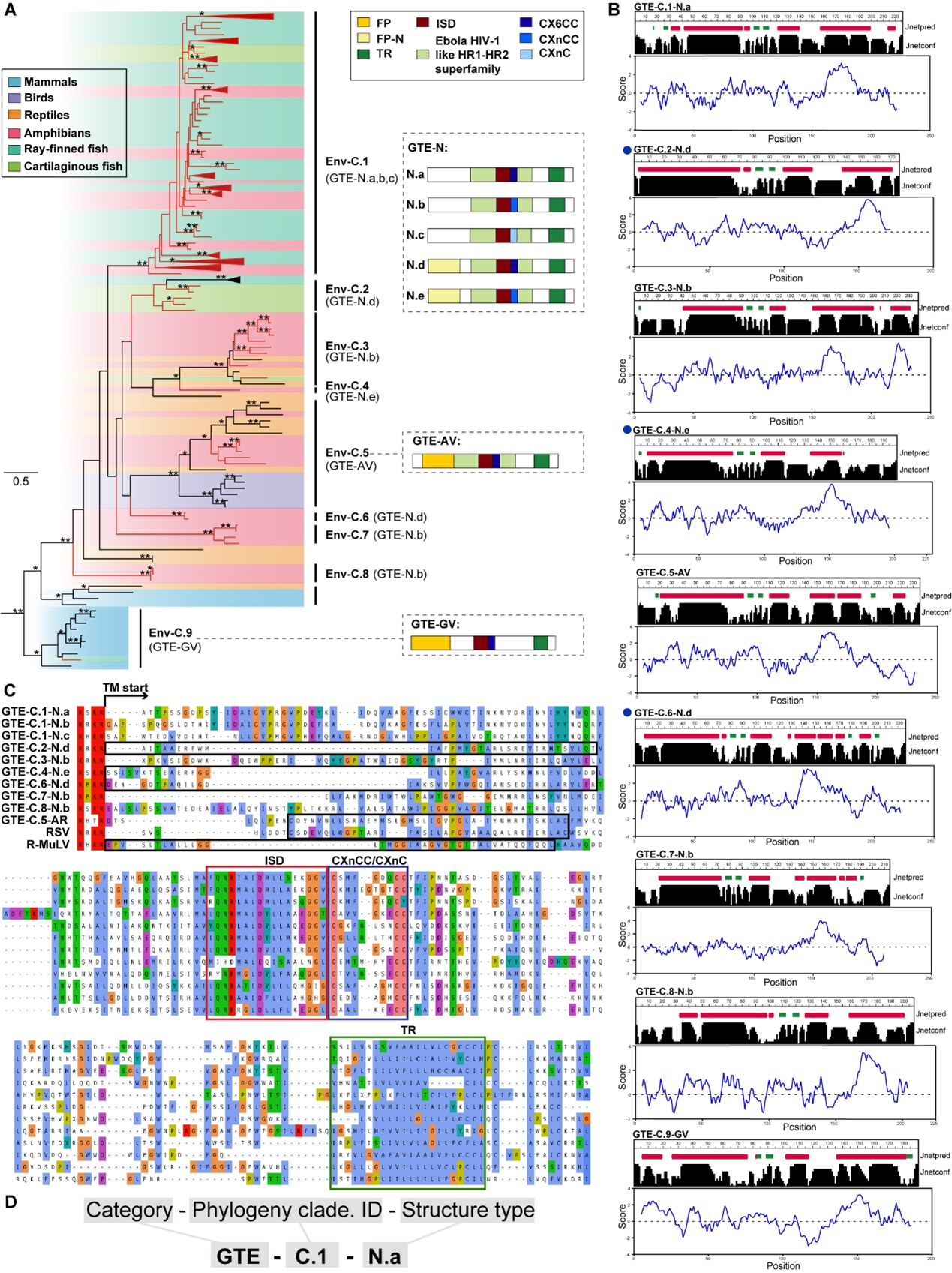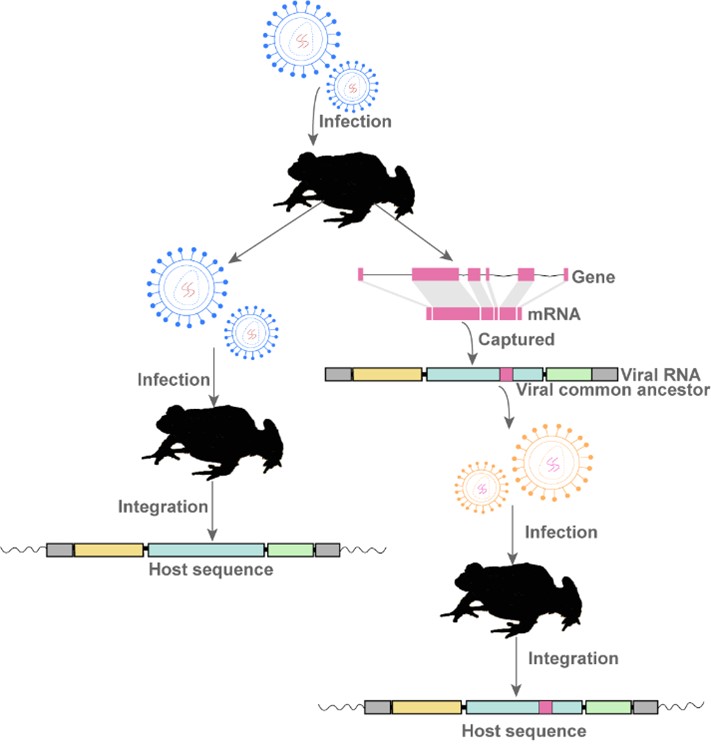In the study published in the Journal of Virology on April 7th, entitled Evolution and Genetic Diversity of the Retroviral Envelope in Anamniotes, Prof. CUI Jie’s group at Institut Pasteur of Shanghai, the Chinese Academy of Sciences extensively characterized the evolution and recombination events of endogenous retroviruses (ERVs) in anamniotes by focusing on envelope proteins.
Retroviruses occasionally integrate into the germline of the host and become endogenous retroviruses (ERVs), which serve as historical genomic ‘fossils’ for investigating viral origins and the history of virus-host interactions over millions of years. ERVs are widespread in the genomes of a wide range of euryhaline vertebrates, accounting for about 8% of the human genome, and play an important role in numerous biological processes.
Typical ERVs contain three major protein-coding genes: group-specific antigen (gag), polymerase (pol) and envelope (env) genes. The retroviral envelope (Env) plays a significant role in host range determination, but major information on their genetic diversification and evolution in anamniotes is lacking. The study of non-amniote ERVs provides strong supporting for the ancient marine origin theory of retroviruses, and gene co-option between viruses and hosts.

Characterization and classification of novel GTEs. (Image by IPS) (A) Phylogeny of GTEs. The left tree was inferred using amino acid sequences of the conserved region of transmembrane subunit (TM). The newly identified ERVs-GTE and expRVs-GTE are labeled in red. The host information of each retrovirus is indicated using a shaded box. The typical GTE structures are shown on the right. (B) Prediction results of secondary structure and hydropathicity scores of amino acids in TM. The Secondary structure is shown at the top and the corresponding amnio acid hydrophilic index is shown at the bottom. Jnetpred is secondary structure prediction for TM. The alpha helix is labeled with red box and beta fold is labeled as green box. Jnetconf shows the reliability of prediction accuracy, range from 0 to 9, and large means more robust. (C) Alignment of FP, ISD, the CX6CC motif and the flanking conserved domain of representative ERVs-GTE and other exogenous viruses. (D) The nomenclature for GTEs. In this study, Professor CUI’s team identified more than 25000 copies of ERVs with gamma-type Env (ERVs-GTE) by incorporating genomic and transcriptomic data and performing comprehensive phylogenomic analyses, which significantly increased the known set of ERVs-GTE in anamniote vertebrates.
Most importantly, by combining phylogenetic and genomic structure characterization, this team introduced seven new subtypes of Env, uncovered the structural complexity and phylogenetic diversity of gamma-type Envs (GTEs) and redefined the classification of Env. Additionally, an ancient horizontal gene transfer event was firstly identified from anamniotes to ERVs. Overall, the comprehensive analyses provide interesting new insights into ERVs in anamniotes.

Evolution scenario of retrovirus capturing host OGFr_N terminus domain. (Image by IPS)
Contact
CUI Jie
Institut Pasteur of Shanghai, Chinese Academy of Sciences
E-mail: cbchen@ips.ac.cn
Link of article: https://journals.asm.org/doi/10.1128/jvi.02072-21

